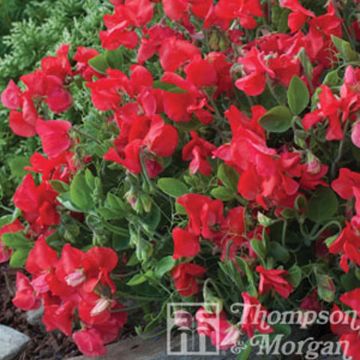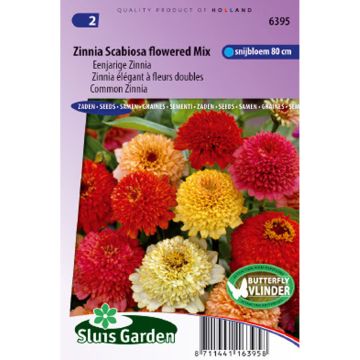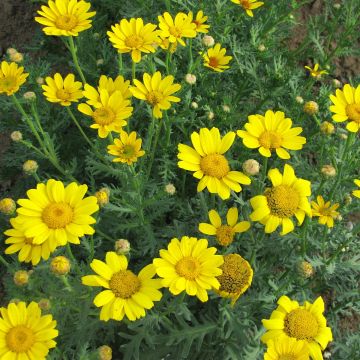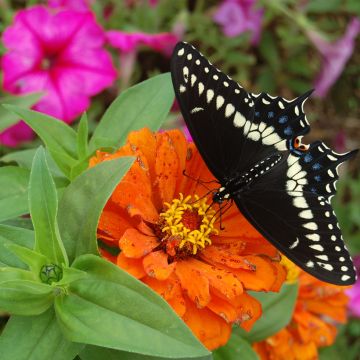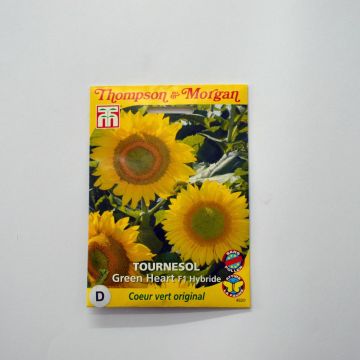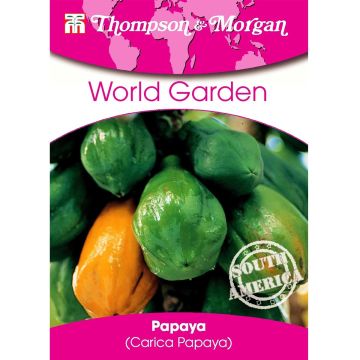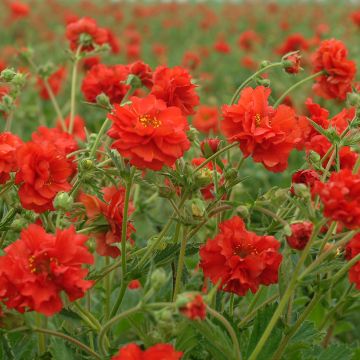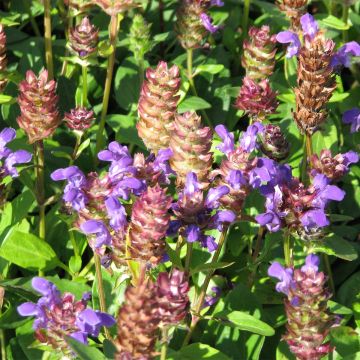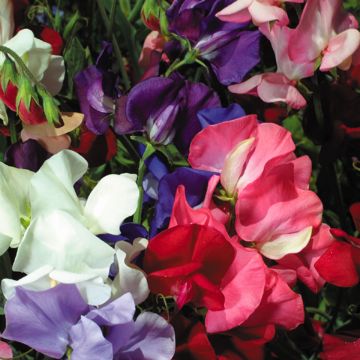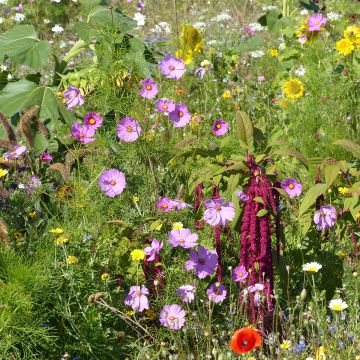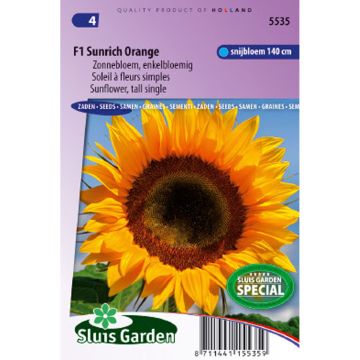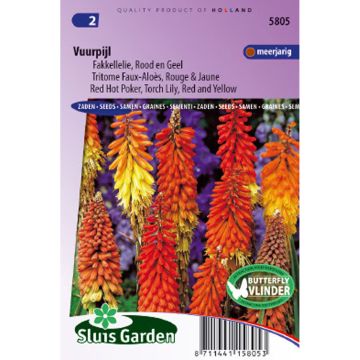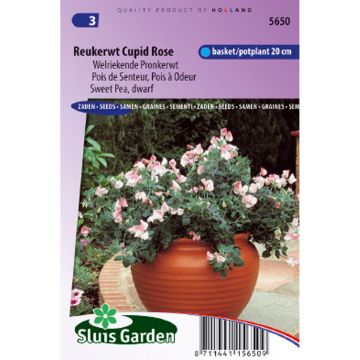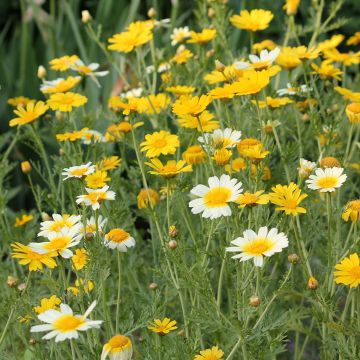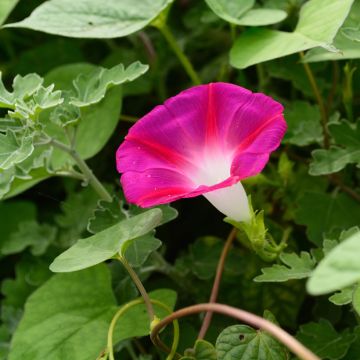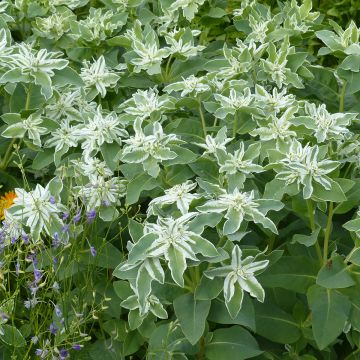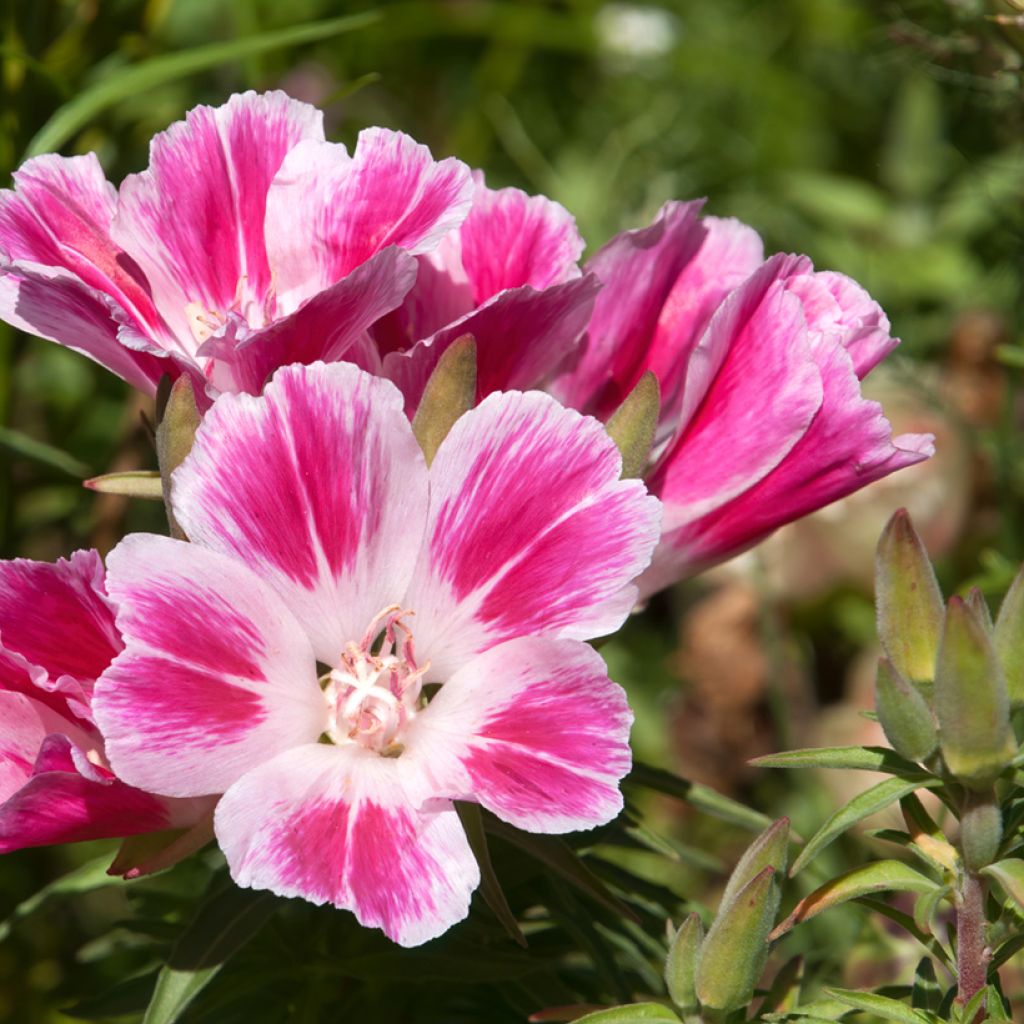

Godetia Rembrandt Seeds - Clarkia


Godetia Rembrandt Seeds - Clarkia
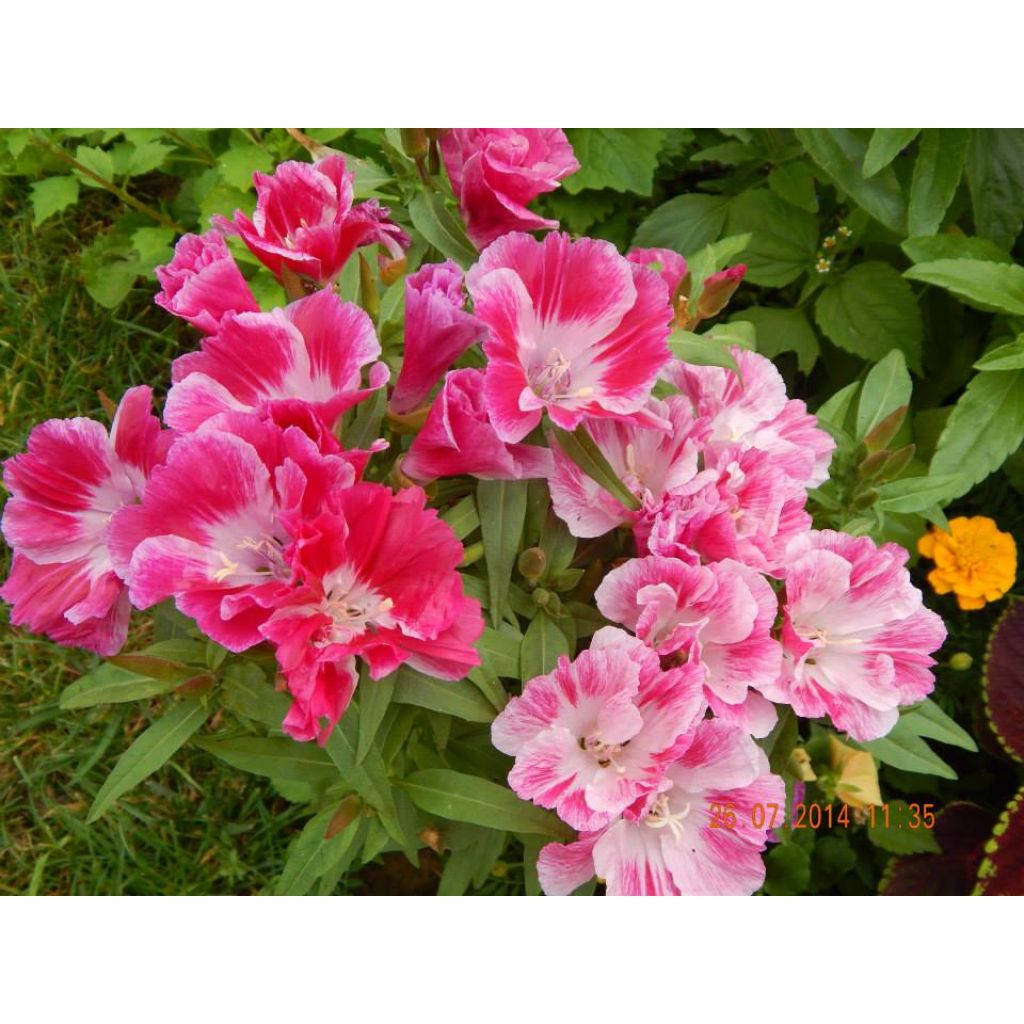

Godetia Rembrandt Seeds - Clarkia
Godetia Rembrandt Seeds - Clarkia
Godetia amoena Rembrandt
Clarkia Flower
Speed of delivery
anne, 13/03/2024
This item cannot be shipped to the selected country
Dispatch by letter from €3.90
More information
Schedule delivery date,
and select date in basket
This plant carries a 6 months recovery warranty
More information
We guarantee the quality of our plants for a full growing cycle, and will replace at our expense any plant that fails to recover under normal climatic and planting conditions.
Seed-only orders are dispatched by sealed envelope. The delivery charge for seed-only orders is €3.90.
Does this plant fit my garden?
Set up your Plantfit profile →
Description
Godetia 'Rembrandt' is a very attractive selection that features bicoloured azalea-like flowers on bushy plants all summer long. The satiny, blush pink petals are painted with deep carmine pink. Effortlessly romantic, ideal for brightening up summer beds, borders and containers. Direct sow in spring in well-drained, loose, fertile, cool to dry soil.
Godetia amoena, known nowadays as Clarkia amoena or C. grandiflora, is an annual that belongs to the Onagraceae family and is native to California. Easy to grow from seed, the dense, bushy plants grow to about 50 cm tall and 30 cm wide in one season. Each pyramid-shaped plant is covered in summer with masses of silky, slightly crinkled blooms, displaying broad corollas in host of soft or bold colours. Some flowers are two-toned, with attractive markings at the base of the petals. Flowers last from June to September depending on the sowing date; it is possible to extend the blooming period by staggering your sowing. Flowers are followed by seed capsules which split open and release numerous seeds when mature.
Once an ornamental garden favourite, this easy-to-grow plant deserves a true comeback. Ideal for creating patches of colour in beds and borders, Godetia is very versatile, suitable for growing just about anywhere - from rock gardens to flower pots. It combines well with lighter, airier plants such as small ornamental grasses (Stipa tenuifolia, barbata, pennata or Mulhenbergia capillaris), flax, catmint, annual poppies or Love-in-a-mist. For ever-changing bedding schemes all summer long, pair with oriental poppies and asters. And last but not least, Godetia is a fabulous cut flower – what’s not to love!
Report an error about the product description
Flowering
Foliage
Plant habit
Botanical data
Godetia
amoena
Rembrandt
Onagraceae
Clarkia Flower
Cultivar or hybrid
Other Thompson and Morgan seeds
Planting and care
Direct sow from March to May. Scatter the seeds lightly, about 3 mm deep, in furrows about 45 cm apart. Soil should be well prepared and loose. Thin out the weaker seedlings, leaving a 15-22 cm space between each plant. For earlier blooms, sow indoors in pots or containers in a light place. Water sparingly. Transplant when the seedlings are strong enough to be handled, when frosts are no longer a problem.
Godetias are easy to grow in a sunny position, in all temperate climates. They thrive in slightly acidic, cool but well-drained soil. Allow the soil to dry out a little between waterings. Overly rich soil stimulates foliage growth to the detriment of flowering. Remove spent flowers to extend the flowering period.
Sowing period
Intended location
-
, onOrder confirmed
Reply from on Promesse de fleurs
Flower seeds
Haven't found what you were looking for?
Hardiness is the lowest winter temperature a plant can endure without suffering serious damage or even dying. However, hardiness is affected by location (a sheltered area, such as a patio), protection (winter cover) and soil type (hardiness is improved by well-drained soil).

Photo Sharing Terms & Conditions
In order to encourage gardeners to interact and share their experiences, Promesse de fleurs offers various media enabling content to be uploaded onto its Site - in particular via the ‘Photo sharing’ module.
The User agrees to refrain from:
- Posting any content that is illegal, prejudicial, insulting, racist, inciteful to hatred, revisionist, contrary to public decency, that infringes on privacy or on the privacy rights of third parties, in particular the publicity rights of persons and goods, intellectual property rights, or the right to privacy.
- Submitting content on behalf of a third party;
- Impersonate the identity of a third party and/or publish any personal information about a third party;
In general, the User undertakes to refrain from any unethical behaviour.
All Content (in particular text, comments, files, images, photos, videos, creative works, etc.), which may be subject to property or intellectual property rights, image or other private rights, shall remain the property of the User, subject to the limited rights granted by the terms of the licence granted by Promesse de fleurs as stated below. Users are at liberty to publish or not to publish such Content on the Site, notably via the ‘Photo Sharing’ facility, and accept that this Content shall be made public and freely accessible, notably on the Internet.
Users further acknowledge, undertake to have ,and guarantee that they hold all necessary rights and permissions to publish such material on the Site, in particular with regard to the legislation in force pertaining to any privacy, property, intellectual property, image, or contractual rights, or rights of any other nature. By publishing such Content on the Site, Users acknowledge accepting full liability as publishers of the Content within the meaning of the law, and grant Promesse de fleurs, free of charge, an inclusive, worldwide licence for the said Content for the entire duration of its publication, including all reproduction, representation, up/downloading, displaying, performing, transmission, and storage rights.
Users also grant permission for their name to be linked to the Content and accept that this link may not always be made available.
By engaging in posting material, Users consent to their Content becoming automatically accessible on the Internet, in particular on other sites and/or blogs and/or web pages of the Promesse de fleurs site, including in particular social pages and the Promesse de fleurs catalogue.
Users may secure the removal of entrusted content free of charge by issuing a simple request via our contact form.
The flowering period indicated on our website applies to countries and regions located in USDA zone 8 (France, the United Kingdom, Ireland, the Netherlands, etc.)
It will vary according to where you live:
- In zones 9 to 10 (Italy, Spain, Greece, etc.), flowering will occur about 2 to 4 weeks earlier.
- In zones 6 to 7 (Germany, Poland, Slovenia, and lower mountainous regions), flowering will be delayed by 2 to 3 weeks.
- In zone 5 (Central Europe, Scandinavia), blooming will be delayed by 3 to 5 weeks.
In temperate climates, pruning of spring-flowering shrubs (forsythia, spireas, etc.) should be done just after flowering.
Pruning of summer-flowering shrubs (Indian Lilac, Perovskia, etc.) can be done in winter or spring.
In cold regions as well as with frost-sensitive plants, avoid pruning too early when severe frosts may still occur.
The planting period indicated on our website applies to countries and regions located in USDA zone 8 (France, United Kingdom, Ireland, Netherlands).
It will vary according to where you live:
- In Mediterranean zones (Marseille, Madrid, Milan, etc.), autumn and winter are the best planting periods.
- In continental zones (Strasbourg, Munich, Vienna, etc.), delay planting by 2 to 3 weeks in spring and bring it forward by 2 to 4 weeks in autumn.
- In mountainous regions (the Alps, Pyrenees, Carpathians, etc.), it is best to plant in late spring (May-June) or late summer (August-September).
The harvesting period indicated on our website applies to countries and regions in USDA zone 8 (France, England, Ireland, the Netherlands).
In colder areas (Scandinavia, Poland, Austria...) fruit and vegetable harvests are likely to be delayed by 3-4 weeks.
In warmer areas (Italy, Spain, Greece, etc.), harvesting will probably take place earlier, depending on weather conditions.
The sowing periods indicated on our website apply to countries and regions within USDA Zone 8 (France, UK, Ireland, Netherlands).
In colder areas (Scandinavia, Poland, Austria...), delay any outdoor sowing by 3-4 weeks, or sow under glass.
In warmer climes (Italy, Spain, Greece, etc.), bring outdoor sowing forward by a few weeks.

































